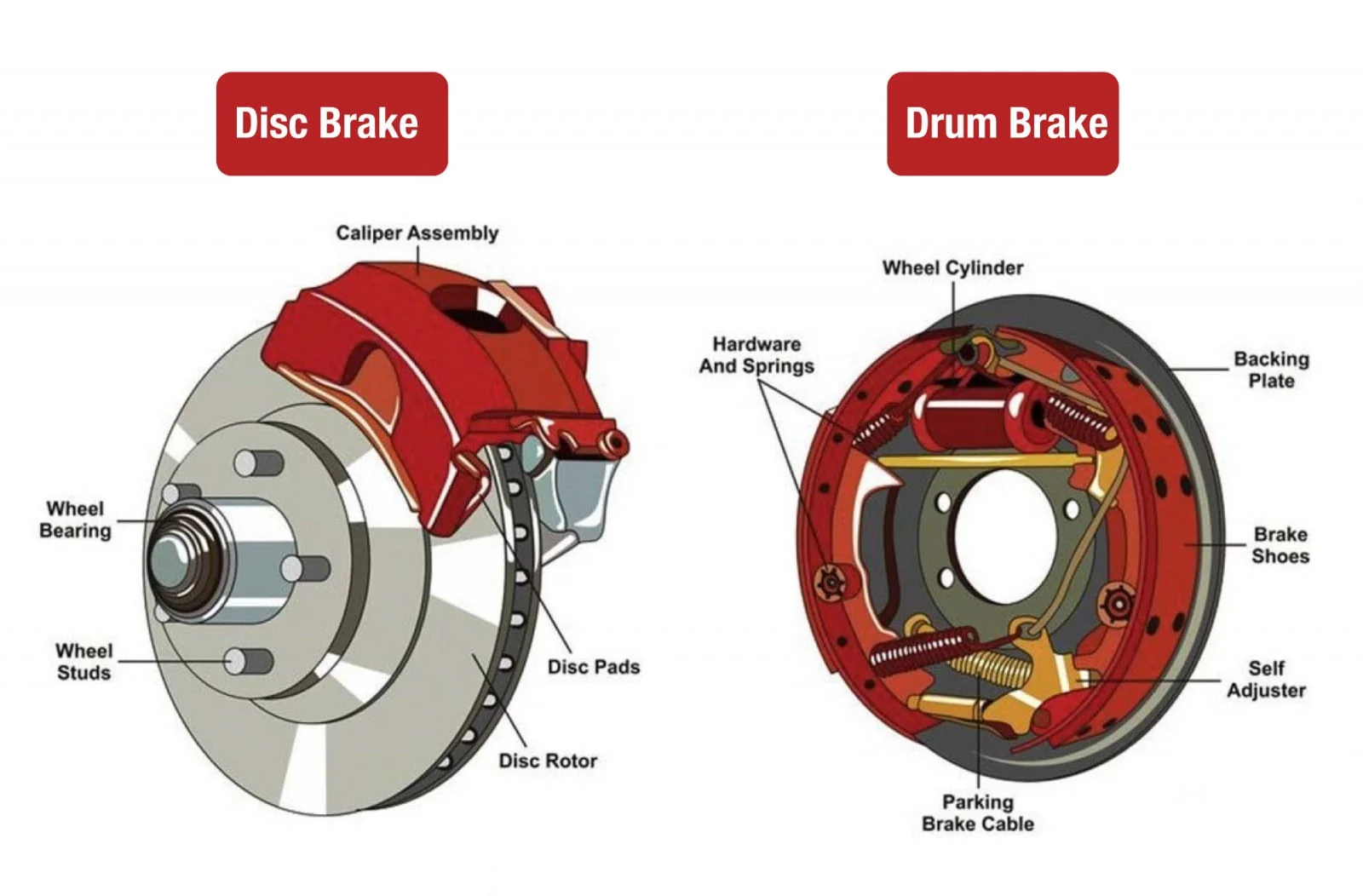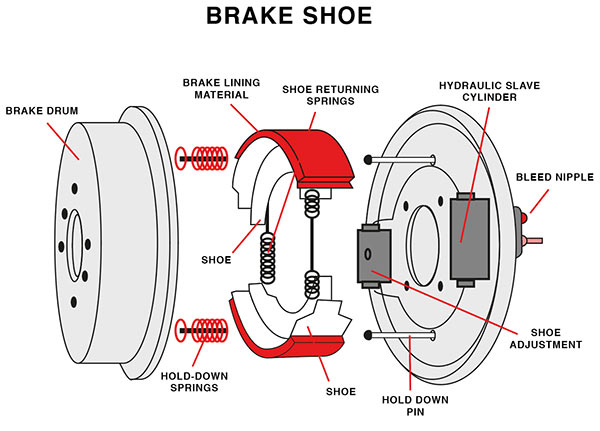When it comes to the safety of your vehicle, understanding the components of your braking system is crucial. You might have heard the terms “brake pads” and “brake shoes,” but do you know what sets them apart?
Knowing the difference could mean the world when it comes to maintaining your car effectively. Imagine confidently navigating the roads, assured in the knowledge that your brakes are in top shape. This article will unravel the distinctions between brake pads and brake shoes, helping you make informed decisions about your car’s maintenance.
Dive in and discover how these two essential parts work, so you can ensure your vehicle remains as safe and reliable as possible.
Basics Of Brake Pads
Brake pads are made from special materials. These materials help in stopping the car. Common materials include ceramic, metallic, and organiccompounds. Ceramic pads are quiet and clean. Metallic pads are strong but can be noisy. Organic pads are soft and gentle.
Brake pads work by pressing against a metal disc. This disc is called a rotor. When the pads press the rotor, the car slows down. Friction helps in stopping the car. Pads get hot when used. They must be strong to handle this heat.
Brake pads are used in many vehicles. Cars and trucks mostly have brake pads. Pads are common in modern vehicles. They are found in vehicles with disc brakes. These brakes are efficient and popular. Most vehicles today use them for safety.
Basics Of Brake Shoes
Brake shoes are made from strong materials. Steel and friction material are common. These help in stopping the vehicle. Friction material can be organic or synthetic. Organic materials come from natural sources. Synthetic materials are man-made. These materials wear out over time. Durability is important for safety.
Brake shoes press against a drum. This stops the wheel from moving. The friction slows down the vehicle. Shoes are curved to fit in the drum. Pressure helps the shoes grip the drum. This makes stopping smooth. Dust can collect in the drum. Regular cleaning is necessary.
Brake shoes are in many vehicles. Cars, trucks, and buses use them. They work well in heavy vehicles. Shoes are common in older cars. Some modern cars use them too. Shoes are usually in the rear wheels. They help in emergency stops. Shoes are also in motorcycles.
Key Differences
Brake pads are flat and sit inside a caliper. They squeeze the rotor to stop. Brake shoes are curved like a half-moon. They press against the drum to slow down. Both parts help in stopping the car safely. Brake pads are often used in disc brakes. Brake shoes are found in drum brakes.
Brake pads cool quickly and work well in all weather. They give a smooth stop. Brake shoes can heat up more but are good for parking brakes. They are more efficient for heavy vehicles. Each has its own strengths in different situations.
Brake pads can cost more than brake shoes. But they may last longer. Brake shoes might need more frequent checks. Replacing shoes can be cheaper. Both need regular care to work well. This helps keep drivers safe on the road.

Credit: natrad.com.au
Pros And Cons Of Brake Pads
Brake padsstop cars quickly. They work well with disc brakes. Durabilityis a key benefit. Brake pads last longer than shoes. They are easy to change. This saves time for mechanics. No special tools needed. Brake pads perform well in wet conditions. They provide better grip. Safety improves with brake pads.
Brake pads can be expensive. They cost more than brake shoes. Some pads can be noisy. They can make squeaky sounds. Brake pads wear out discs. This can lead to extra costs. Dust can be a problem. It can dirty wheels. Pads need regular checks. Ignoring them can be risky. Over time, they lose effectiveness.
Pros And Cons Of Brake Shoes
Brake shoesare long-lasting. They don’t wear out quickly. These shoes work well in the rear wheels of cars. They are also less expensive than brake pads. This makes them a cost-effective choice. They are ideal for vehicles that need less stopping power. For example, older cars or trucks. Brake shoes are also easy to replace. No need for special tools.
Brake shoes may not perform well in high-speed braking. They can overheat if used too much. This can lead to brake fade. Brake shoes can also be noisy. They produce more dust than brake pads. This can make them dirty. They also require more maintenance. Keeping them clean is important. This ensures they work properly.
Choosing The Right System
Brake padsand brake shoesare important for stopping. Picking the right one is key. Think about your vehicle typeand how you use it. Cars and motorcycles often use brake pads. Trucks and older vehicles may use brake shoes. Daily driving or long trips? This can help decide.
Consider maintenance. Brake pads are easy to check and change. Brake shoes last longer but may be harder to replace. Regular care helps them last. Keep an eye on wear and tear. Safe brakes mean safe driving.
Common Misconceptions
Brake pads and brake shoes serve different functions in braking systems. Brake pads are used in disc brakes, pressing against a disc to stop the car. Brake shoes are found in drum brakes, expanding inside a drum to create friction.
Understanding these differences helps maintain vehicle safety effectively.
Interchangeability Myths
Some think brake padsand brake shoesare the same. They are not. Brake pads are for disc brakes. Brake shoes are for drum brakes. These parts are not interchangeable. Each has a unique role in stopping a vehicle. Mixing them up can cause problems. Your car might not stop well. It is important to know the difference.
Performance Misunderstandings
Brake pads and shoes work differently. Brake pads press against a disc. Brake shoes push against a drum. Some believe one is better. That’s not true. Each works best in its own system. Both are important for safety. Always choose the right one for your car. This ensures your car stops safely every time.

Credit: www.youtube.com

Credit: www.championautoparts.com
Conclusion
Understanding brake pads and brake shoes helps maintain your car’s safety. Brake pads sit on disc brakes, while brake shoes work with drum brakes. Each has its own benefits and fits different car types. Regular checks and replacements keep your brakes effective.
This ensures a safer driving experience for everyone. Choose the right brake system for your vehicle needs. Stay informed about their differences for better maintenance. Safety should always be a priority on the road. Proper care leads to longer-lasting brakes.
Always seek professional advice when unsure. Your vehicle deserves the best care possible.
